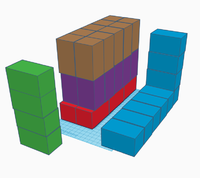munro raymaker
New member
- Joined
- May 4, 2021
- Messages
- 5
So this is from my sons math exam. The question is: You are moving away from home and have rented a van. The van has the internal dimensions:
Length 260 cm
Width 155 cm
Height 185 cm.
How many moving boxes can you fit inside the van when each moving box measures 40x40x70 cm? The boxes can be stacked in any way possible.
a. 36
b. 48
c. 54
My son said a, but his classmate said 48. My guess is 54. Who's right?
Length 260 cm
Width 155 cm
Height 185 cm.
How many moving boxes can you fit inside the van when each moving box measures 40x40x70 cm? The boxes can be stacked in any way possible.
a. 36
b. 48
c. 54
My son said a, but his classmate said 48. My guess is 54. Who's right?

